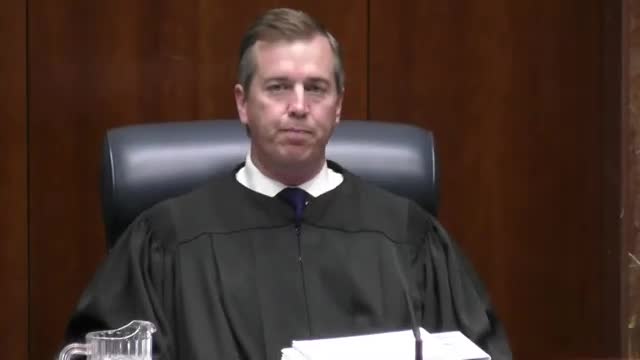Texas high court considers dram‑shop summary‑judgment standard in Raegar (Cadeau) v. Myers
January 13, 2025 | Supreme Court of Texas, Judicial, Texas
This article was created by AI summarizing key points discussed. AI makes mistakes, so for full details and context, please refer to the video of the full meeting. Please report any errors so we can fix them. Report an error »

The Supreme Court of Texas heard argument in Raegar Corporation v. Myers (Cadeau restaurant), a dram‑shop appeal that asks when a retailer can be held liable for harms caused by a patron. The central legal question is whether summary judgment is appropriate where the plaintiff’s evidence includes a post‑incident blood alcohol concentration (BAC), an expert’s retrograde extrapolation, the patron’s later statements, and testimony from the bartender about training and the number of drinks served.
Why it matters: The court’s interpretation of the Texas Alcoholic Beverage Code’s apparent‑intoxication standard—whether conduct must be visibly intoxicated at the time of service and how circumstantial BAC evidence and expert opinion factor into that inquiry—affects liability exposure for bars and restaurants across Texas and the protection available to victims of alcohol‑related harms.
Argument summary: Petitioner counsel for Cadeau urged reversal of the court of appeals’ denial of summary judgment, saying the record lacks evidence that the patron “appeared obviously intoxicated to the extent that he presented a clear danger to himself and others” at the time the alcohol was served. Petitioner stressed that the statute’s benchmark focuses on appearance at the time of service and that neither the tab nor eyewitness testimony support a finding of obvious intoxication.
Respondent counsel countered that apparent intoxication can be established by circumstantial evidence—BAC, expert retrograde extrapolation and admissions by the patron—and that a trained bartender’s testimony about what signs would be visible at a given BAC creates a fact issue for the jury. Counsel also emphasized that a server’s TABC training creates a statutory safe harbor but that the training and the bartender’s awareness of the statutory standard can also help a plaintiff survive summary judgment if other evidence suggests the patron was intoxicated.
Justices pressed both sides on the statutory text. They asked whether a high BAC alone can establish liability when visible signs of intoxication were not observed at the restaurant, and whether large hypothetical drink counts (asked in court hypotheticals) could ever, by themselves, make intoxication “apparent.” Counsel for the respondent argued that a juror could reasonably infer intoxication from the BAC and surrounding facts and that the record here contains contradictions that should be resolved by a jury. Petitioner’s counsel replied that the statute requires observable signs, not merely numerical BAC, and that the record contains consistent testimony that the patron did not display overt signs while at the restaurant or at the scene.
The court recessed and took the case under submission. The ruling will determine whether evidence like post‑incident BAC combined with expert extrapolation and eyewitness testimony can defeat summary judgment under the “obvious intoxication” standard of the Texas Alcoholic Beverage Code.
Why it matters: The court’s interpretation of the Texas Alcoholic Beverage Code’s apparent‑intoxication standard—whether conduct must be visibly intoxicated at the time of service and how circumstantial BAC evidence and expert opinion factor into that inquiry—affects liability exposure for bars and restaurants across Texas and the protection available to victims of alcohol‑related harms.
Argument summary: Petitioner counsel for Cadeau urged reversal of the court of appeals’ denial of summary judgment, saying the record lacks evidence that the patron “appeared obviously intoxicated to the extent that he presented a clear danger to himself and others” at the time the alcohol was served. Petitioner stressed that the statute’s benchmark focuses on appearance at the time of service and that neither the tab nor eyewitness testimony support a finding of obvious intoxication.
Respondent counsel countered that apparent intoxication can be established by circumstantial evidence—BAC, expert retrograde extrapolation and admissions by the patron—and that a trained bartender’s testimony about what signs would be visible at a given BAC creates a fact issue for the jury. Counsel also emphasized that a server’s TABC training creates a statutory safe harbor but that the training and the bartender’s awareness of the statutory standard can also help a plaintiff survive summary judgment if other evidence suggests the patron was intoxicated.
Justices pressed both sides on the statutory text. They asked whether a high BAC alone can establish liability when visible signs of intoxication were not observed at the restaurant, and whether large hypothetical drink counts (asked in court hypotheticals) could ever, by themselves, make intoxication “apparent.” Counsel for the respondent argued that a juror could reasonably infer intoxication from the BAC and surrounding facts and that the record here contains contradictions that should be resolved by a jury. Petitioner’s counsel replied that the statute requires observable signs, not merely numerical BAC, and that the record contains consistent testimony that the patron did not display overt signs while at the restaurant or at the scene.
The court recessed and took the case under submission. The ruling will determine whether evidence like post‑incident BAC combined with expert extrapolation and eyewitness testimony can defeat summary judgment under the “obvious intoxication” standard of the Texas Alcoholic Beverage Code.
View full meeting
This article is based on a recent meeting—watch the full video and explore the complete transcript for deeper insights into the discussion.
View full meeting
